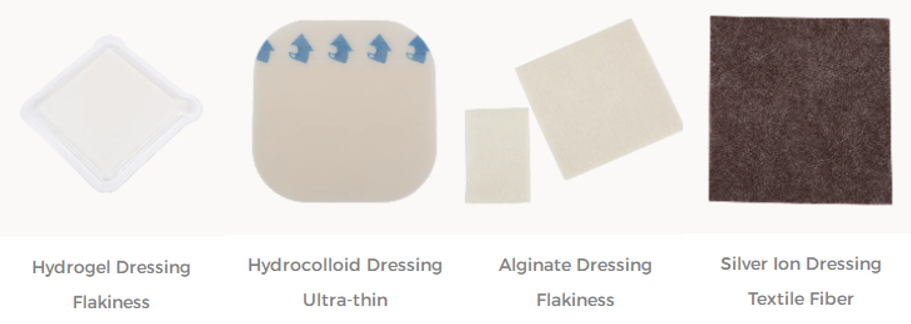Wounds are part of the body's natural healing process, but sometimes wounds don't heal naturally and require different treatments. This article will discuss the different treatment modalities required for non-healing wounds.
First, find out why the wound is not healing:
Infectious factors: Wounds that do not heal may be due to infection. Wound infection can cause symptoms such as pain, redness, discharge, fever, etc. If left untreated, the wound will not heal. Therefore, for infected wounds, it is necessary to use antibiotics and other anti-infective drugs to control infection and promote wound healing.
Lack of nutrients: A wound that does not heal may be due to a lack of nutrients. The human body needs sufficient nutrients to promote wounds, and if the body lacks the necessary nutrients, the wounds cannot heal. Therefore, for malnourished patients, dietary adjustments or oral nutritional supplements are required to supplement adequate nutrition to promote wound healing.
Lack of oxygen in the wound: A wound that does not heal may be due to a lack of oxygen. Oxygen is necessary for cell growth and repair, and if there is a lack of oxygen around a wound, the wound will not heal. Therefore, for hypoxic wounds, oxygen therapy is needed to increase the oxygen supply around the wound to promote wound healing.
Other causes: Wounds that don't heal can be due to other reasons such as diabetes, poor circulation, immune system problems, etc. These problems require treatment on a case-by-case basis to promote wound healing.
Different treatments for non-healing wounds :
1. Antibiotic treatment Infection is one of the common reasons why wounds do not heal. Antibiotics can effectively control wound infection and promote wound healing. Antibiotic treatment usually needs to be carried out under the guidance of a doctor to ensure the correct dosage and timing of medication.
2. Use Silver Ion Dressing: It can release silver ions, which have a broad-spectrum antibacterial effect, can effectively kill bacteria and viruses in the wound, and prevent wound infection. Compared with traditional antibiotics, silver ion dressings are less prone to drug resistance and can be used for a long time. Silver ion dressings can stimulate wound growth factors and cell proliferation, and promote wound healing; silver ions can activate fibroblasts and fibroblasts in the wound, increase collagen synthesis, and promote wound healing; wound infection can cause pain and exudate, affecting the quality of life of patients; silver ion dressings can reduce wound pain and exudate, and improve the quality of life of patients; silver ion dressings have good biocompatibility and will not cause irritation or allergic reactions to wounds, and are comparable to traditional antibiotics Compared with silver ion dressings, the toxic and side effects of silver ion dressings are less, and the safety is higher; the use of silver ion dressings is simple, and can be used in various occasions such as hospitals and families. Under normal circumstances, silver ion dressings need to be replaced every 3-7 days, and the specific replacement time needs to be adjusted individually according to the condition and etiology of the wound.
3. Oxygen Therapy Lack of oxygen is another common cause of wounds not healing. Oxygen therapy can increase the oxygen supply around the wound and promote wound healing. Oxygen therapy can be given by inhaling oxygen or using an oxygen mask.
4. Nutritional support The human body needs adequate nutrition to promote wound healing. For malnourished patients, dietary adjustments or oral nutritional supplements are needed to supplement adequate nutrition to promote wound healing.
5. Surgical treatment For larger or deeper wounds, surgical treatment may be required. Surgery can remove dead tissue and bacteria around the wound and promote wound healing. Surgical treatment needs to be carried out under the guidance of a doctor, and close attention should be paid to wound care and recovery after surgery.
The treatment method should be individualized according to the specific conditions and etiology of the wound in order to achieve the best therapeutic effect. During the treatment process, the condition of the wound should be closely monitored, and the treatment plan should be adjusted in time to promote wound healing.
For more information on Innomed® Silver Ion Dressing, Refer to the Previous Articles. If you have customized needs, you are welcome to contact us; You Wholeheartedly. At longterm medical, we transform this data by Innovating and Developing Products that Make Life Life easier for those who need loving care.
Editor: kiki Jia
Date: August 25, 2023

 English
English عربى
عربى Español
Español русский
русский 中文简体
中文简体








